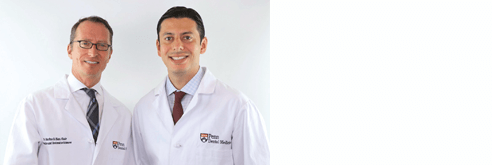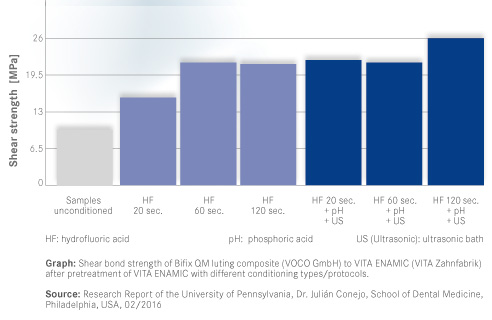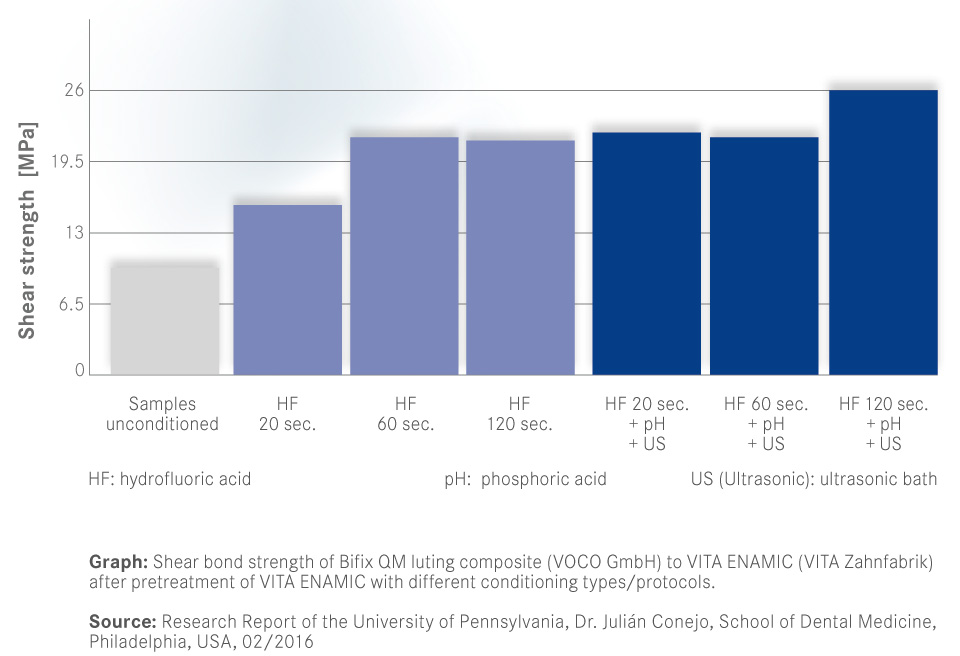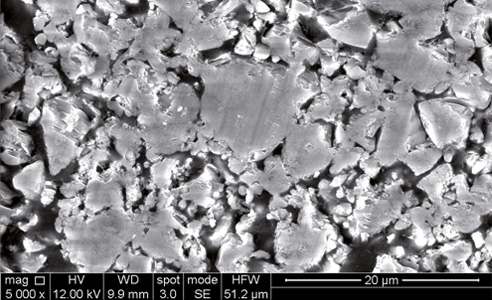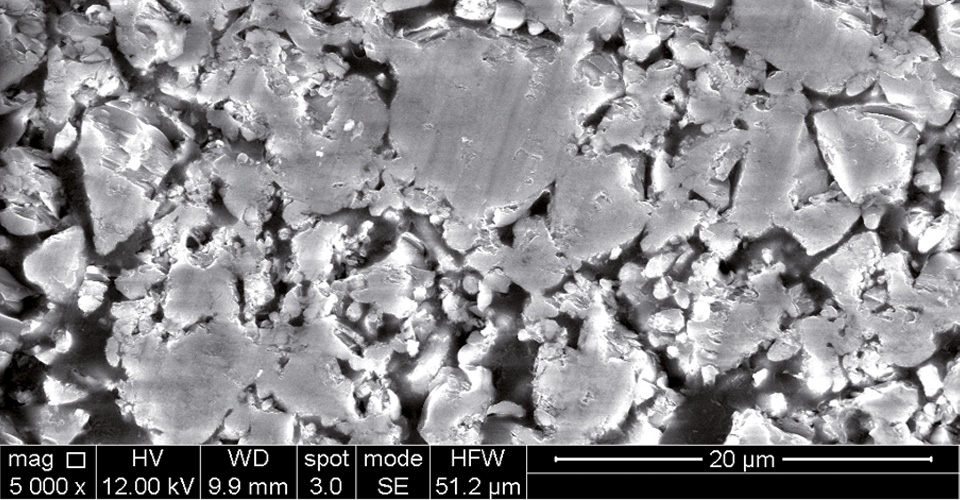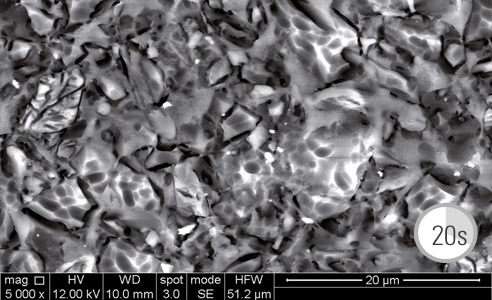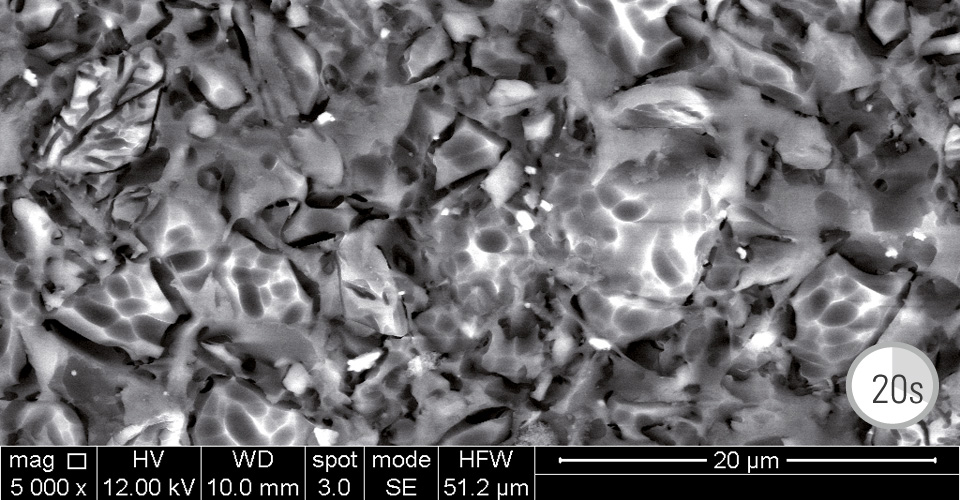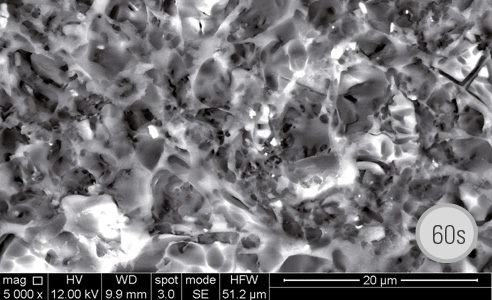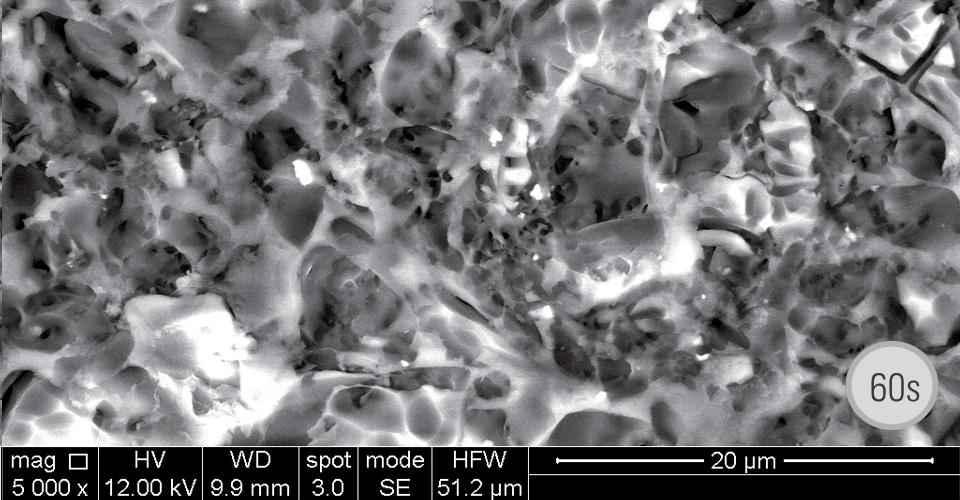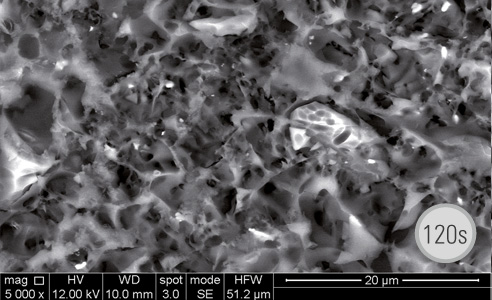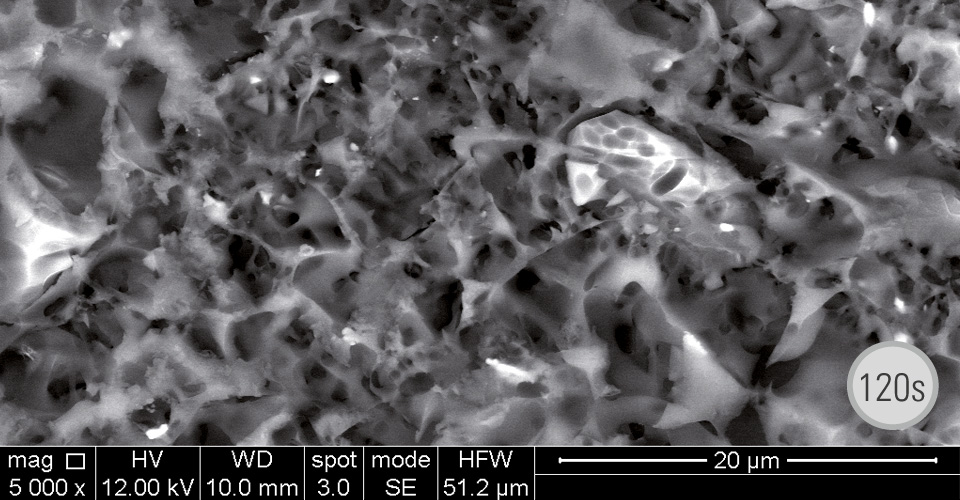The restoration must be conditioned for a reliable adhesive bond between the luting composite and the hybrid ceramic. Dr. Julián Conejo (University of Pennsylvania, School of Dental Medicine, Philadelphia, USA) investigates, in a current in-vitro study under the leadership of Prof. Dr. Markus B. Blatz, how different conditioning types/protocols may influence the bond strength to the hybrid ceramic VITA ENAMIC (VITA Zahnfabrik, Bad Säckingen, Germany). In the following interview, he reports his scientific results.
DV: Please explain the study method and what parameters were modified in the conditioning and pretreatment of the hybrid ceramic?
Dr. Julián Conejo: 70 test specimens of the hybrid ceramic VITA ENAMIC were etched for 20, 60, or 120 seconds with 5% hydrofluoric acid. The etched surfaces were cleaned with either phosphoric acid or in an ultrasound bath. For the study, including the control group with no pretreatment, seven different subgroups were formed. After the application of the bonding agent and the composite application, the test specimens were stored in distilled water. The final shear strength was determined and the data was statistically evaluated.
DV: Based on your discoveries, how important is the etching with 5% hydrofluoric acid for a reliable adhesive bond of the luting composite to the ceramic restoration?
Dr. Julián Conejo: It is very important to apply hydrofluoric acid to create a roughened surface for a good micromechanical retention. All etched sample specimens showed a significant increase in bonding strength to the luting composite. In order to ensure a sustained clinical success of the restoration, hydrofluoric acid is a critical process step for the treatment provider.
DV: How can the exposure time to the hydrofluoric acid affect the bonding strength of the luting composite to VITA ENAMIC?
Dr. Julián Conejo: Different etching patterns on the test specimens were generated with different exposure times to the hydrofluoric acid. In our study, a short etching time of 20 seconds resulted in significantly lower adhesion values. The adhesive force increases with longer etching times. However, there was no difference for etching times between 60 and 120 seconds.
DV: How important is it to carefully observe the manufacturer's conditioning protocol when applying hydrofluoric acid and bonding agents?
Dr. Julián Conejo: That is very important. Our results show that the current surface conditioning recommended by VITA Zahnfabrik enables the greatest adhesion and is also the simplest. According to the instructions for use, hybrid ceramics should be etched for 60 seconds and then the silane bonding agent (primer) massaged in for 60 seconds.
DV: A ccording to your experience, can the treatment provider have a positive influence on the adhesive bond with further or additional steps ?
Dr. Julián Conejo: Not really. That was one of our hypotheses. Now we know that additional cleaning steps after the etching with hydrofluoric acid does not produce any significantly higher values. Neither the additional surface treatment with phosphoric acid nor the ultrasonic bath has improved the adhesive strength values compared to the hydrofluoric acid etching. For a reliable bond, a clean, pre-treated surface of the restoration is always important after the try-in.
DV: Besides the conditioning of the restoration, what is important in the pretreatment of the tooth substance in order to achieve a good adhesive bond?
Dr. Julián Conejo: Isolation with a rubber dam allows absolute dryness and a clean working field. The surface of the dissection should also be conditioned with an adhesive system prior to attachment. This in turn makes a perfect connection between the hard tooth substance and the luting composite possible.
Report 08/16


